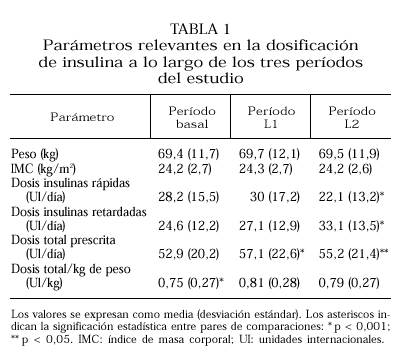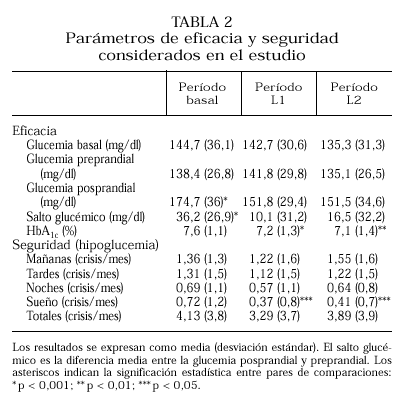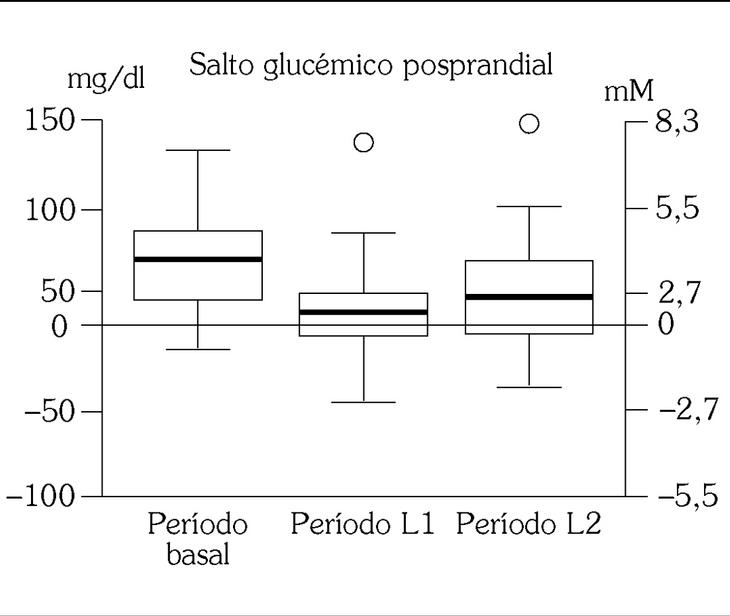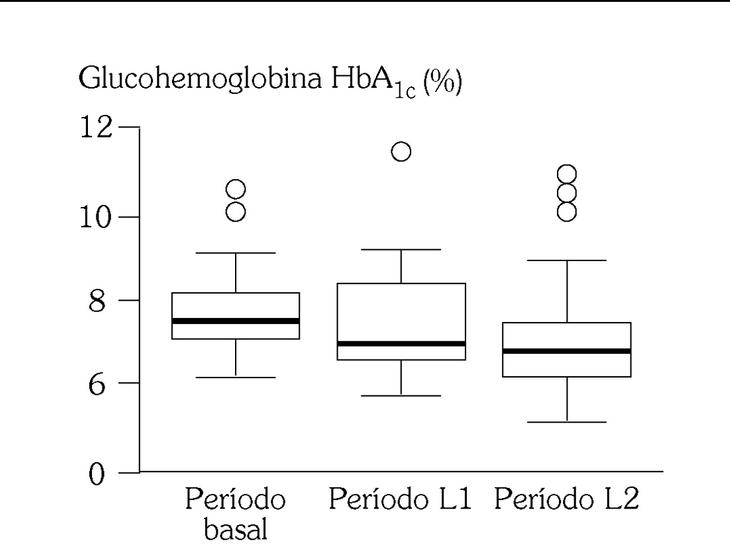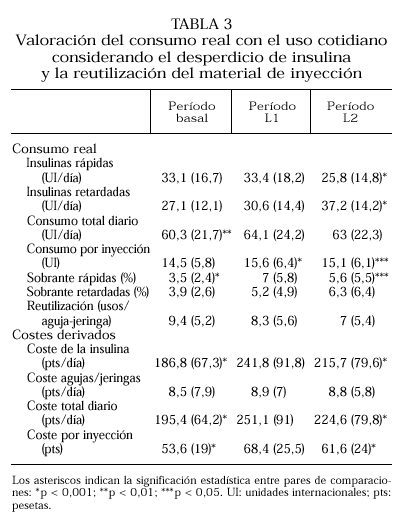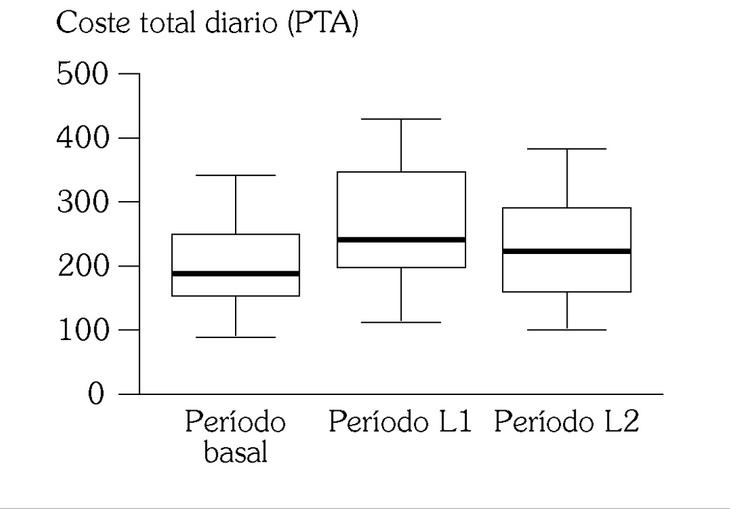Para analizar el coste y la efectividad inicial de la transferencia a dos tratamientos con insulina lispro en la diabetes tipo 1 se desarrolló un estudio farmacoeconómico durante 9 meses. Después del refuerzo educativo, un grupo de 30 pacientes con péptido-C negativo, de 31,8 ± 11,5 años (x ± DE), duración de la diabetes de 9,2 ± 7,1 años y en terapia intensiva desde hacía 5,3 ± 3,1 años inició un período basal de 3 meses con su tratamiento habitual (insulina rápida preprandial y NPH nocturna). Luego se asignaron aleatoriamente a uno de los dos grupos, sustituyendo la insulina rápida por lispro (L1) o bien por lispro mezclada con un 15%-20% de insulina NPH (L2), cruzándose a los 3 meses. La eficacia se valoró por la HbA1c y el autoanálisis de la glucemia capilar; la seguridad por el registro minucioso de la hipoglucemia. El coste consideró el consumo real de insulina (teórico y desperdicio) y material de inyección. La dosis total prescrita fue menor en el período basal que en L1 y L2 (52,9; 57,1; 55,2 UI/día; p < 0,001) y también la realmente consumida (60,3, 64,1, 63 UI/día; p < 0,01), sin diferencias entre L1 y L2. La glucemia posprandial (9,7, 8,4, 8,3 mM; p < 0,001) y la HbA1c (7,6%, 7,2%, 7,1%; p < 0,01) disminuyeron en L1 y L2 sin incremento global de la hipoglucemia. Las crisis durante el sueño fueron más infrecuentes (0,72, 0,37, 0,41 crisis/mes; p < 0,05). El coste bruto diario del tratamiento con insulina rápida fue menor (186,8, 241,8, 215,7 pts; p < 0,001). El sobrecoste diario estimado para reducir un 1% la HbA1c fue 134,1 pts durante L1 y 53,7 en L2. La efectividad y seguridad de ambas terapias con lispro fue parecida, pero la mezcla preprandial de lispro con NPH fue más coste-efectiva.
Palabras clave:
diabetes tipo 1, insulinoterapia, insulina lispro, farmacoeconomía, coste-efectividad
In order to analyze the initial cost-effectiveness of transfer to two treatments with insulin lispro in type 1 diabetes, a pharmaco-economic study was conducted for nine months. After an educational reinforcement, a group of 30 C-peptide-negative patients (31.8 ± 11.5 years [mean ± SD], time since diagnosis of diabetes of 9.2 ± 7.1 years, and on intensive therapy for 5.3 ± 3.1 years) initiated a 3-month basal period with their usual therapy (preprandial rapid insulin and nocturnal NPH). Patients were then randomly assigned to one of the two groups, changing rapid insulin to either lispro (L1) or lispro combined with 15% to 20% NPH insulin (L2). Cross-over was made 3 months after the first treatment. Efficacy and safety were established by the assessement of HbA1c, self-monitoring blood glucose and hypoglycemia rates. Therapy cost was measured by systematic examination of the injection devices and wastage of insulin. The mean prescribed and actually consumed doses for R, L1, L2 groups were 52.9, 57.1, 55.2 U and 60,3, 64,1, 63 U per day, respectively (p < 0.001). The average of postprandial peak glucose (9.7, 8.4, 8.3 mM; p < 0.001) and HbA1c (7.6%, 7.2%, 7.1%; p < 0.01) were significantly lower after L1 or L2 lispro therapy. Although no statistical differences in overall hypoglycemia rates were observed, fewer nocturnal episodes were detected (0.72, 0.37, 0.41 events/month). The mean daily cost for regular insulin treatment was lower (186.8, 241.8; 215.7 pts and 53,7 pts per day. Efficacy and safety for two MIT regimens containing lispro were similar in the short run. Nevertheless, the preprandial use of the fast-acting insulin analog lispro in combination with a 15%-20% intermediate-acting NPH seemed to be more cost-effective than the premeal lispro therapy alone.
Keywords:
Type-1 diabetes, insulin therapy, lispro, pharmacoeconomics, cost-effectiveness





